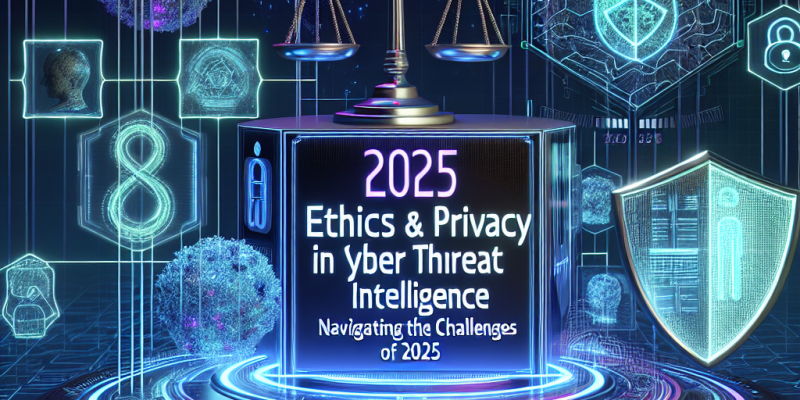“Ethics and Privacy in Cyber Threat Intelligence: Navigating the Challenges of 2025”

Ethics and Privacy in Cyber Threat Intelligence: Navigating the Challenges of 2025
As we progress through 2025, the landscape of cyber threat intelligence (CTI) continues to evolve rapidly. With increasing cyber attacks on businesses and individuals, understanding the ethical and privacy implications of CTI has never been more important. This article explores these challenges and offers insights into maintaining a balance between security and individual rights.
The Importance of Cyber Threat Intelligence
Cyber threat intelligence refers to the collection and analysis of data related to potential cyber threats. Organizations use CTI to understand the tactics, techniques, and procedures of cybercriminals. This information is vital for protecting sensitive data and ensuring operational integrity. However, as CTI becomes more sophisticated, the ethical considerations surrounding its use also grow.
Ethical Considerations in CTI
-
Data Collection: Gathering data is a core component of CTI. However, organizations must be cautious about how they collect this information. Ethical CTI practices require transparency and consent, as well as compliance with data protection laws like the General Data Protection Regulation (GDPR).
-
Data Sharing: Organizations often share intelligence to bolster their security. While collaboration can enhance defensive measures, it raises questions about user privacy. Companies must ensure that shared data does not include personally identifiable information (PII) without proper anonymization.
-
Bias and Accuracy: AI and machine learning are increasingly used in CTI. However, algorithms can be biased or lead to misinformation. Organizations should critically evaluate the sources and data they use to avoid drawing conclusions based on flawed intelligence.
Privacy in Cyber Threat Intelligence
-
User Consent: The principle of obtaining user consent is crucial. Organizations must ensure that individuals are aware of how their data is being used and give explicit permission for its collection and analysis.
-
Risk of Surveillance: In the fight against cyber threats, organizations may be tempted to monitor users more closely. This surveillance can infringe on privacy rights. A balance needs to be struck between necessary observation and excessive monitoring.
-
Transparency with Customers: Companies should inform their customers about their data collection practices. Clear communication can help build trust and reassure users about their privacy rights.
Navigating Challenges in 2025
As we move further into 2025, several challenges will impact the balance between ethics and privacy in CTI:
-
Regulation Changes: Governments are continually updating laws around data protection. Organizations must stay informed about new regulations to ensure compliance and ethical practice.
-
Technological Advancement: The rapid pace of technology development can outstrip existing ethical frameworks. Organizations must adopt flexible policies that can adapt to new tools and practices.
-
Public Awareness: As public awareness of privacy issues grows, organizations may face greater scrutiny. Engaging with customers about ethical practices can enhance reputation and trust.
Conclusion
In conclusion, navigating the ethical and privacy challenges of cyber threat intelligence requires careful consideration. As we face a future filled with complex threats and advancements, organizations must prioritize ethical practices and respect for user privacy. By doing so, they not only protect sensitive information but also foster trust with their customers. Balancing security with ethical responsibility is essential in this evolving landscape, making it crucial for organizations to remain vigilant and proactive.














